Deep Diving: Water Wheels and Paper Making in 19th Century Sweden
Researching is really about deep diving. It is the only way to flesh out an ancestor’s life. For me it almost always starts with a question. In this case why was my 2nd great grandfather Carl Gustaf Vantsrum [originally Wenernström] born in Fässberg, Jönköping Sweden, which was 100 miles west of where his family had lived for at least three generations. The following is my deep dive into the answer and even involves a bit of serendipity. I hope the process is valuable to you in your own research. Some research notes at the bottom. The process is not a straight line it involved hopping back and forward through time and trying to connect it all together. And then there is the issue of context. I hope this inspires you to dive a bit deeper into the lives of your ancestors. Names, dates and places are not enough.
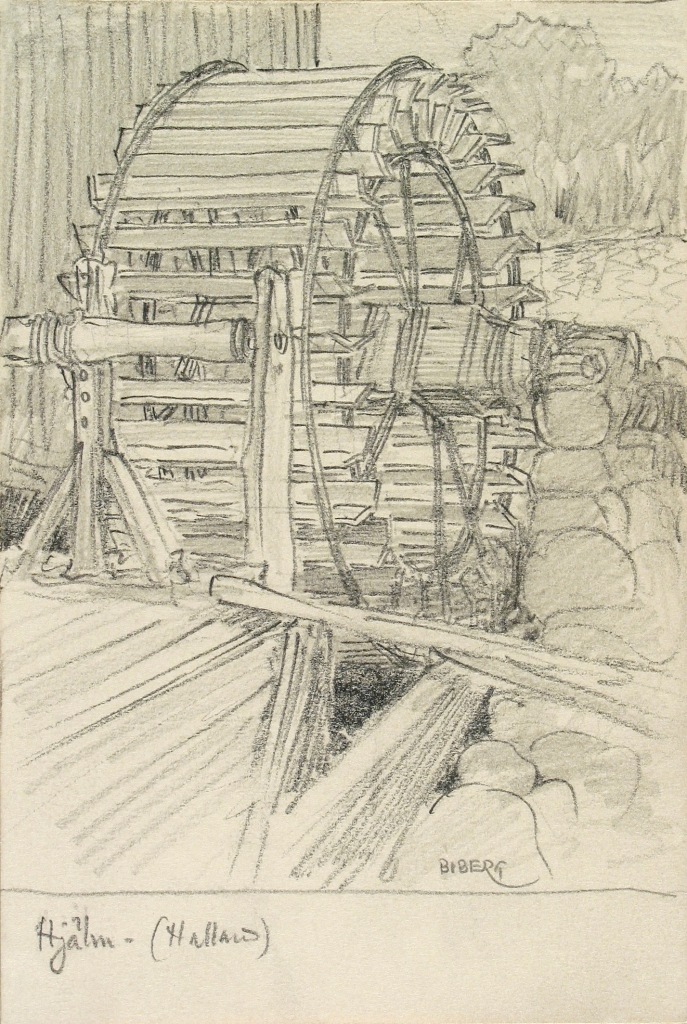
Serendipity
During the hot of the past weeks, I spent much time at my computer while escaping the heat outside. I decided to try to further track down 2nd great-grandfather, Carl Gustaf Vanstrum‘s family in Sweden. I had the rough outlines, where he was born, where his parents were born, but I was missing when and where his parents, Gustaf Wernström and Maria Catharina Hakberg died and why they moved around so much. My aunt and I had lost track of them in Annerstad 40 years ago.
While many of the Swedish Clerical Surveys have been indexed the difficulty with deciphering means that even anything resembling the name you are looking for, is often indexed incorrectly. So going back to the days of hours on a microfilm reader I spent hours looking at hundreds of pages of Household Examination Rolls and Flyttinger (Moving Out) registers, etc., page by page. I finally found where Gustaf Wernström and Maria Catharina Hakberg settled. It was in the parish of Torup, Halland lan and they lived there from their arrival in 1846 until his death on the 5th of August 1884. She died there December 5th 1872. Just east of Torup is one of two hamlets where they lived one was named Rydö and the other Våcknared. And while looking at it on Mapcarta [better for seeing the names of Scandinavian farms and hamlets than Google] I found a museum there called Rydö Bruksmuseum and a Facebook group so I posted on there group page and a few hours later I had a most wonderful response from Lennardt Hildingsson, including a photo of the house Gustaf Wernström built! “Gustav Wernström was a craftsman, a paper maker, at the Veka [Weka] hand paper mill in Rydö.” Now I had a bigger clue. He was a foreman for handmade paper mill! So I went back to Fässberg and Hakarp seeking answers.
Fässberg and Mölndal
This map shows the proximity of Göteborg to Fässberg where Carl Gustaf Vanstrum [Wernström] was born in 1829. This area is south of the port city of Göteborg from where we expect Carl left on his way to America in 1853.
However this map does not show the ruggedness of the area. Just to keep us on our toes originally the parish of Fässberg encompassed Mölndal and now Mölndal encompasses Fässberg. Mölndal literally means Mill Valley. Many mills were built along the rapids of the Mölndal River. The rapids that would provide the energy to power the water wheels. In about a half mile the rapids drops 150 foot over. This etching by Johan van den Aveelen from about 1703 would give us an idea of the rural nature of the area in an earlier time.
And as luck would have it in 1827, a hand paper mill was built along the Mölndal River called Götafors Pappersbruk. And as it would happen this is where Gustaf was employed when he moved there in 1829! It was powered by a water wheel, and the buildings were constructed of timber. It may have looked a bit like this.
There were as many as 30 mills in 1818 along the Mölndal River and they were used for many purposes. The Götafors Pappersbruk would have been just downstream of this photo taken in 2007. The falling water would power the water wheel that would grind the rags used to make paper. All of these mills in Mölndal were originally built of wood and later replaced by brick.
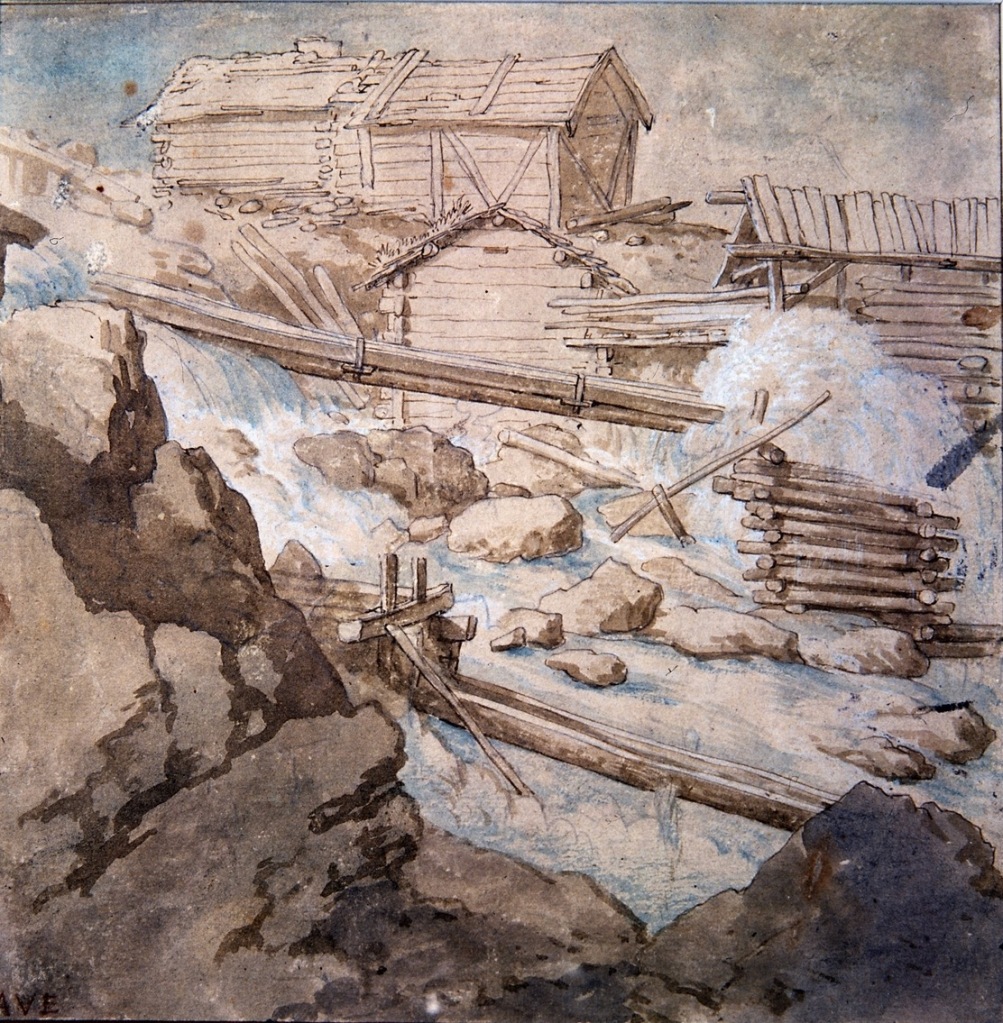
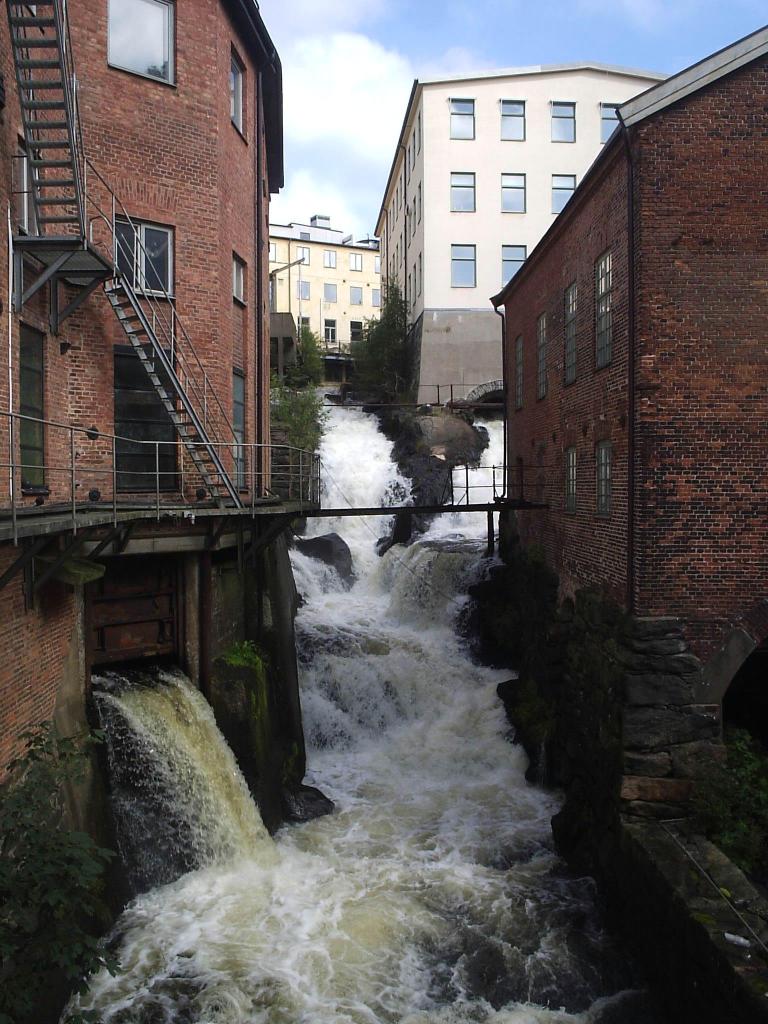
Hakarp and Stensholm
Carl’s parents were both born in Harkarp, Jönköping not far from Husqvarna. Gustaf Wernström and Maria Catharina Hakberg married at Hakarp the 27th of December 1821. The church where they were both baptised and married is pictured below. This is their marriage record.

married Dec 27 1821
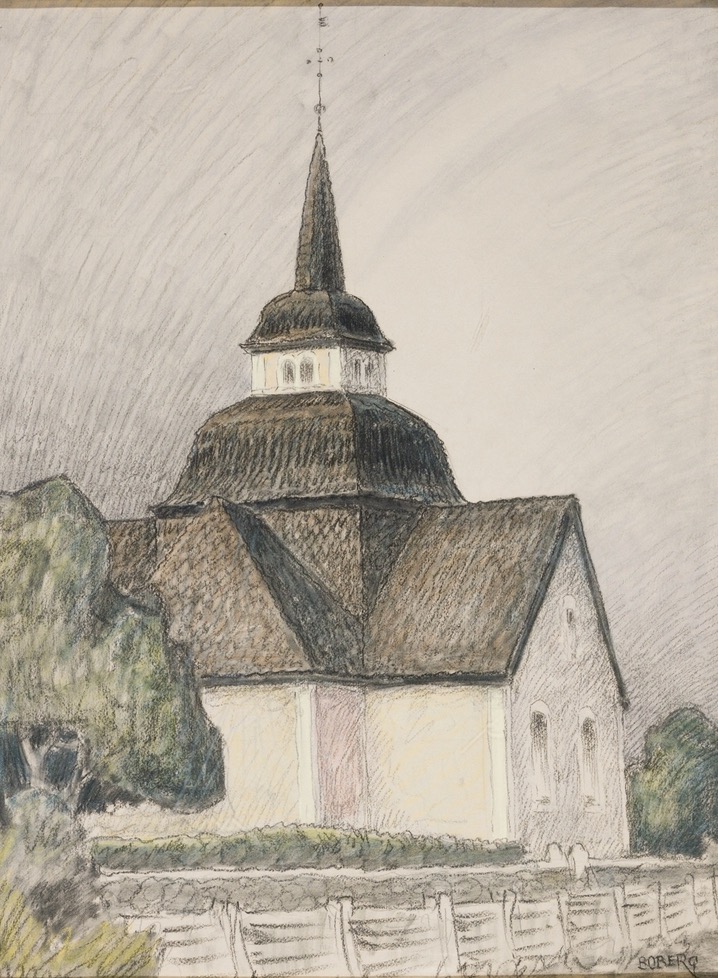
Gustaf Wernström ‘s father, grandfather and great-grandfather all lived at Vedermödan a croft under Stensholm, in the parish of Hakarp. The name Vedermödan translates “Tribulation” and it may have been a tongue and cheek description of the more difficult growing conditions of the two crofts: Vedermödan and Fintorp, although separate crofts they shared a farm house [they were later united under the farm name Fintorp]. Vedermödan was adjacent Stensholm Manor which included over 1000 acres. Here is a picture of the manor in 1905. The manor was built on the estate of a previous castle located on an island in the Huskvarna River. In 1821 Stensholm’s manor held 18 small crofts, Ebbes and Strömma mills and a paper mill. Perhaps Vedermödan was one of it’s crofts. According to Papermaking: History and Technique of an Ancient Craft by Dard Hunter 1947: In 1800 Sweden had 24 Paper Mills. By the 1830’s there were 92.
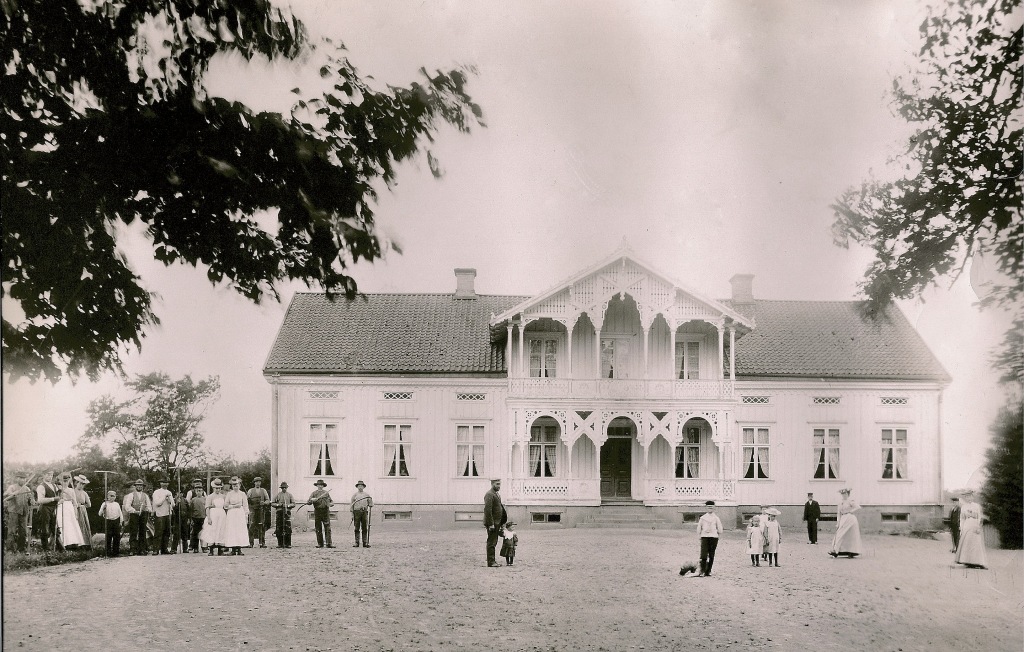
Below is the first use I have found of his Gustaf’s last name Wernström which may have been a name assigned during his mandatory military service. The name literally means Protector [of] River = Wern + Ström. What is interesting is the name was first entered as Gustaf Bengtsson and then above it is written Wernström. This is also the first time that he and his wife Maria Catharina appear together in the Household Examination Rolls. It has the date of their marriage listed as 1821 and their first son Per [Peter] August is listed. [I helpful hint is to look for the birthdate of Gustaf 1801 or in this case “01.” It is sometimes easier than looking for the name when scrolling through hundreds of pages.] It took me several times to find this listing in Hakarp: Stensholm: Paper Mill [Pappers Bruck]. There are 9 journeyman, 2 supervisors and 3 rag collectors. Paper was made from cloth rags until about 1870 when wood pulp was employed. So there were “lumpsamlare” or rag collectors who were employed to go around and collect rags from villagers. Today we still make handmade papers and watercolor papers from 100% rag. This could be cotton or linen.
I believe the Paper mill was adjacent Stensholm’s Estate perhaps where the Saab plant is now or at the location marked ‘stream mill and croft’ [Although the later does not appear to currently have the proper elevation drop] . Gustaf Wernström is listed in Household Clerical Survey 1804-1815 under his parents and grandparents at Vedermödan, Hakarp. The map below shows Stensholm which is a hamlet in the parish of Hakarp, Vedermödan which shared a house with Fintorp and Stensholm Manor which was originally a stone structure now an island within the Husqvarna RIver, perhaps as seen below.
This is what the Stensholm looked like in the year 1900, 99 years after Gustaf’s birth in 1801.
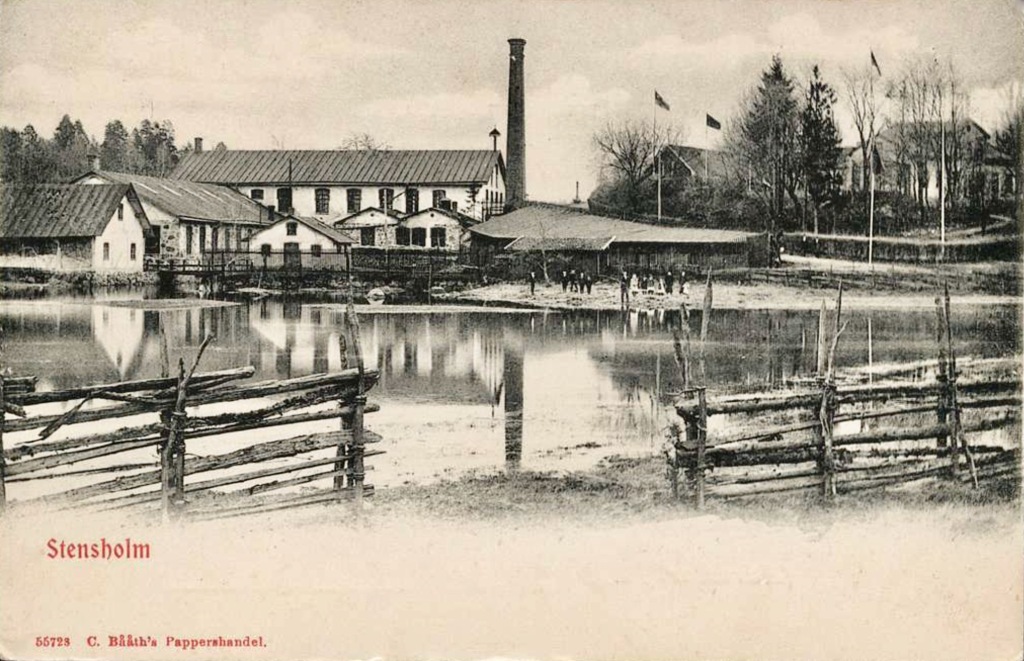
What is truly remarkable is this sketch and watercolor painting by Erik Westerling of Stensholm from about 1840-1850’s showing the Paper Mill. The rapids turned the water wheel which powered the press for the making of paper.
Gustaf’s older brother, Johannes, is set to take over the farm so Gustaf is seeking his fortune elsewhere. His first child arrives October 21st of 1822, Peter August, followed by Carl Frederick 12th of August 1825 but sadly Carl dies the 14th of December of the same year. The family appears on the Flyttninger [Moving out] records in 1826 headed for Fänneslunda, Ålvsborg.
Following the Paper Mills
As it turns out Gustaf Wernström located in Härna which is about 4 miles southeast of Fänneslunda but nearly 50 miles from Stensholm. And no surprise there was a Paper Mill in Härna. Following the path of Gustaf Wernström and Maria Catharina Hakberg was exhausting, but at every stop there is a Paper Mill. And every entry has Gustaf listed as a Journeyman Papersmaker.
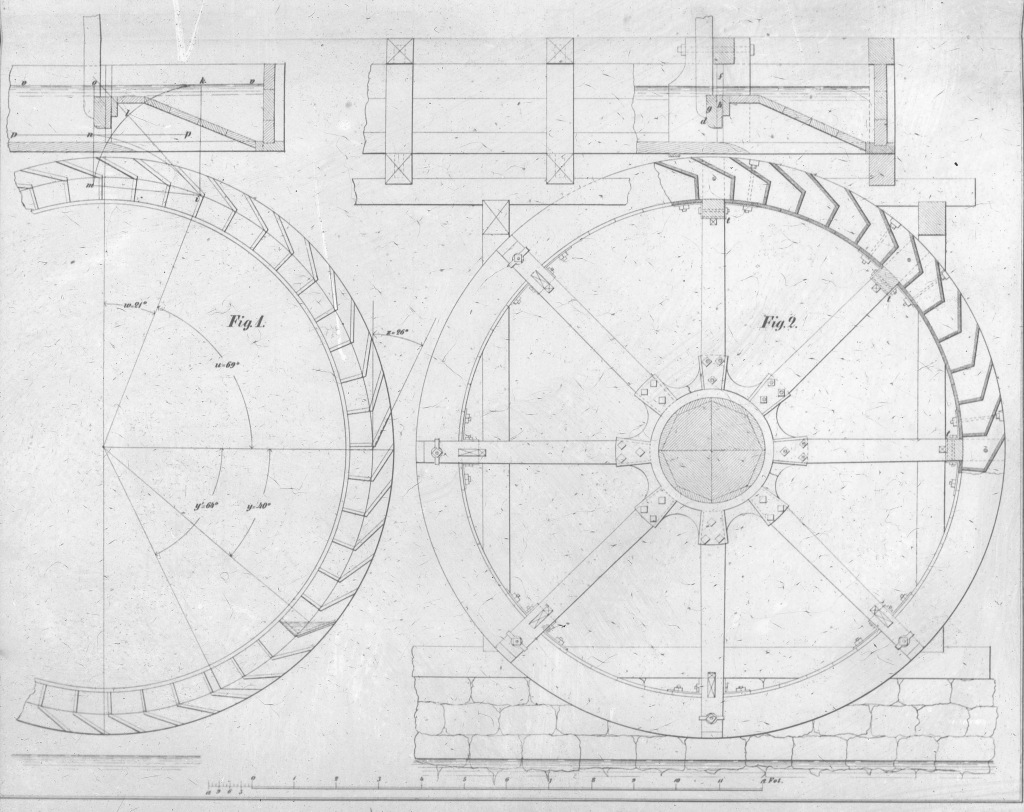
So the mystery of why Gustaf moved 100 miles from Hakarp to Fässberg was solved! With stops in Härna and Sätilla along the way. Then on to Fässberg where his son Carl Gustaf was baptized, but they did not stay long.
Here I have plotted out in My Google Maps all of the places and Mills that Gustaf worked and lived. After Leaving Götafors Papermill he spent most of the next fourteen years at Marbäck Paper Mill.

| Date | Parish | Farm or Hamlet | County | Details |
| 1801 | Hakarp | Vermödan under Stensholm | Jönköping | b. Gustaf Bengtsson |
| 1801-19 | Hakarp | Vermödan under Stensholm | Jönköping | Gustaf on Household rolls |
| 1820 | Hakarp | Hakarp Paper mill Stensholm | Jönköping | Gustaf Wenerström a journeyman at paper mill |
| 1821-1826 | Hakarp | Hakarp Paper mill Stensholm | Jönköping | Gustaf Wenerström m. Maria Catharina Hakberg |
| 1826-27 | Härna | Härna Paper mill | Alvsborg | Gustaf a journeyman at paper mill |
| 1827-1829 | Sätila | Sätila Paper mill | Alvsborg | Gustaf a journeyman at paper mill |
| 1829- Aug 1830 | Fässberg | Götafors Paper mill | Göteborg och Bohus | Gustaf a journeyman at paper mill |
| Aug 1830 | Snöstorp | Marbäck Paper mill | Halland | Gustaf a journeyman at paper mill |
| 1836 | Snöstorp | Skerkerd | Halland | Gustaf a journeyman at paper mill |
| 1836-1840 | Snöstorp | Marbäck Papermill | Halland | Gustaf a journeyman at paper mill |
| 29 Dec 1840 | Annerstad | Hallarp Munkaz: Petersburg | Kronberg | Gustaf a journeyman at paper mill |
| 1842-1844 | Snöstorp | Marbäck Paper mill | Halland | Gustaf a journeyman at paper mill |
| 1844-1846 | Norra Sandsjo | Nyholm Paper mill | Jönköping | Gustaf a journeyman at paper mill |
| Sep 1846-Aug 1884 | Torup | Veka Paper mill, Rydö | Halland | Gustaf a journeyman and foreman at paper mill |
The above drawing created in 1916 gives us a good idea of what it may have looked like some 80 years earlier. In the 1693 census under “Marbäck in Snöstorps parish” there was listed a Paper Master, Carl. A paper mill may have been manufacturing paper here since the 16th century. In 1755, 15,000 sheets of writing paper and 20,000 sheets of printing paper were produced at Marbäck. Gustaf appears to have had short stints at the Skeen Paper and Veka Paper Mills during the years 1830-1846. This remarkable document was found in Torup parish. Rather than an entry in the Inflyttinger [entry registers] this is the actual letter from Sansjö parish [Nyholm Paper Mill] where it lists Gustaf Wernström and Maria Catharina Hakberg and children their birthdates where they were born and that they were leaving from Nyholm, Norra Sandsjö and it is dated 22 September 1846:
Rydöbruk: Veka Paper Mill
In his life Gustaf worked at 8 different Paper Mills in Sweden. In the fall of 1846 he arrived at the Veka [Weka] Mill in the parish of Torup, the community of Rydöbruk where he finally put down roots. From the 1989 “Rydöbruk Bevarandaplan” [Rydöbruk conservation plan] we learn:
“a hand paper mill was built at Veka, a hundred or so meters upstream on the other side of the county border and the south-east side of Nissan. The factory building itself was built on one floor with two smaller extensions, one containing the water wheel, the other containing rag chambers and washrooms. The factory building was divided into two halls, and contained a Dutch press, a molder, a paper press, a boiler wall, a linen and sorting shed and a smoothing machine. Rag storage, two drying sheds and a residential building with associated outbuildings had also been built within the factory area…For papermaking, you needed clean and never-ending water, and you got that from the ‘Kungskällen’ which was located on the north-west side of Nissan…Weka hand paper mill was the largest of Halland county’s three paper mills (the others were Marbäck and Stjärnarp) .“
The Veka Paper Mill was established in 1828 and operated until the 1870’s. A good portion of the factory burned in 1865. So it is likely that Gustaf worked there until it closed. In the 1867-76 Household Examination rolls he is listed as a Foreman. Gustaf would have seen many improvements over the course of his life as a papermaker.
In 1798 a papermaking machine by JNL Robert appeared followed by others. This is a 1/5 scale replica model of his machine.
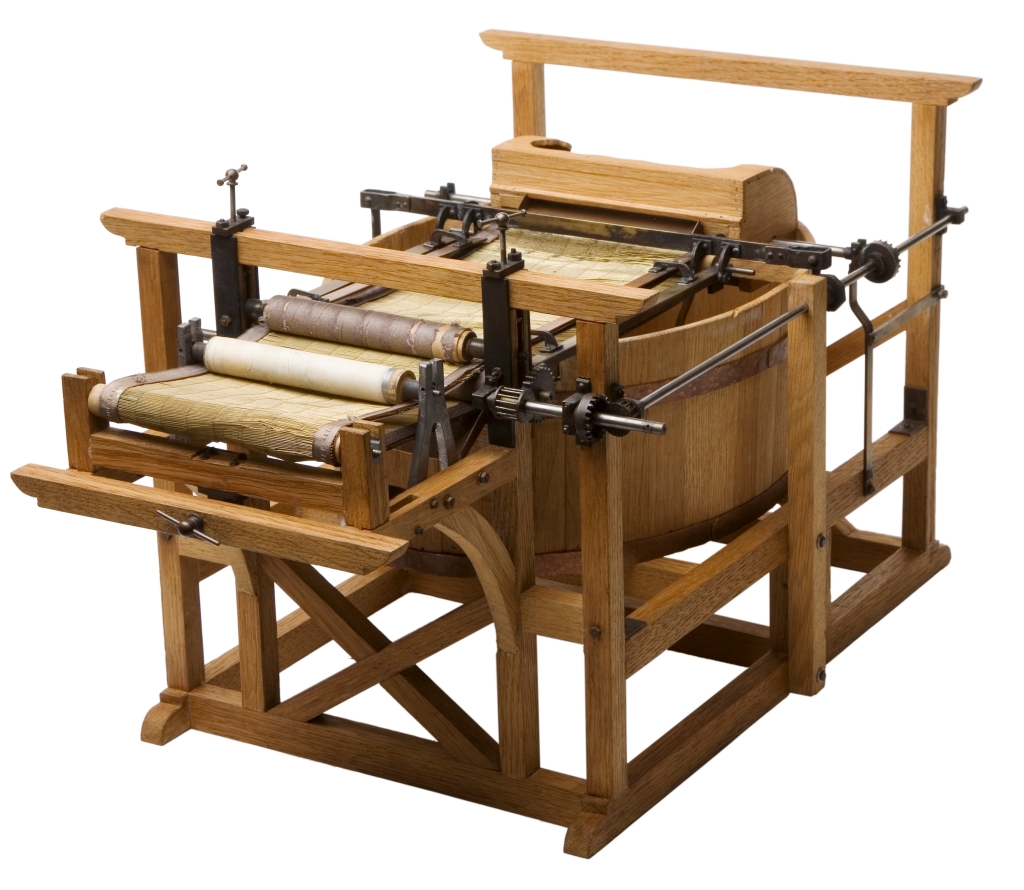
In 1844 Friedrich Gottlob Keller of Germany patented a process for turning wood pulp into paper. A very good article on papermaking is found here “Background: European Papermaking Techniques 1300-1800” by Timothy Barrett. This resource is shared under the Creative Commons [CC]. A few interesting quotes that brings home the skill required in handmade papermaking:
“Therefore, a fine-quality white paper with good look-through was most readily and economically made by first selecting well-worn white rags of a similar strength.”
“The task of the layer demands skill and experience [to] avoid tearing the sheets as they are lifted from the felts. It is suitable only for people who have practiced it from an early age and not for uneducated, inexperienced country-folk.“
“Considerable skill and experience were required to evaluate the strength of the rag and the degree of retting required to produce fibers that would respond readily to stamping yet yield an optimum-quality sheet, with minimal loss of fiber. In the more substantial and well-established mills, fermenting was the job of a specialist, who passed his craft on to his sons or other young artisans.”
In our case, two of Gustaf’s sons became papermakers during their time in Sweden. Johan Alfred who moved to America in 1855 [two years after Carl Gustaf] became a Captain in the Civil War and later a Postmaster and Registrar of Deeds. His brother Nils Mauritz who moved to America in 1865 became a grocer and merchant. My ancestor Carl Gustaf was a carpenter and merchant.
As mentioned earlier Gustaf’s wife, Maria Catharina Hakberg died December 5th 1872 in Rydö. Daughter Ulika Karolina lived with the her father in the house he built, at nearby Våcknared in 1880, until his death August 5th 1884.
And finally we close this journey with a look at the mold for the Rydö paper watermark. It’s nice to think Gustaf may have handled this very mold.
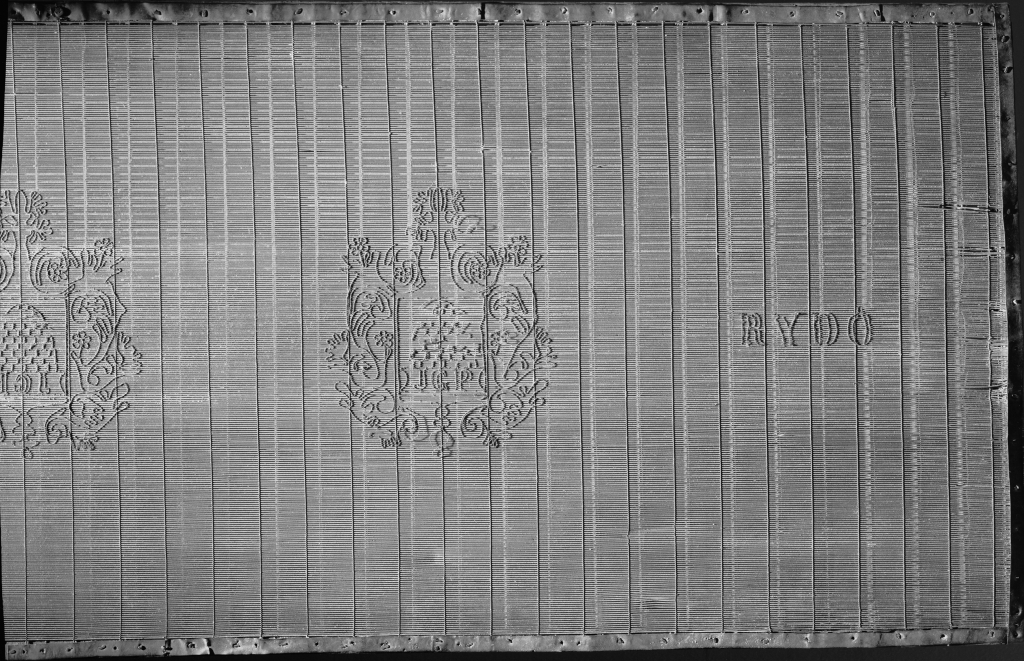
I hope this provides inspiration for your own deep dive you just never know where it will lead!
Resources
- Old Maps online
- Nordisk DIgital Museum. Wonderful source of images
- Facebook for Local museums and Local History Societies
- Google for maps and searches
- Ebay for old post cards and drawings
- Local Swedish Homestown Histories
- FamilySearch for the names of Farms within a Scandinavian Parish
Please not links are included whenever possible.
Kelly Wheaton ©2023 – All Rights Reserved
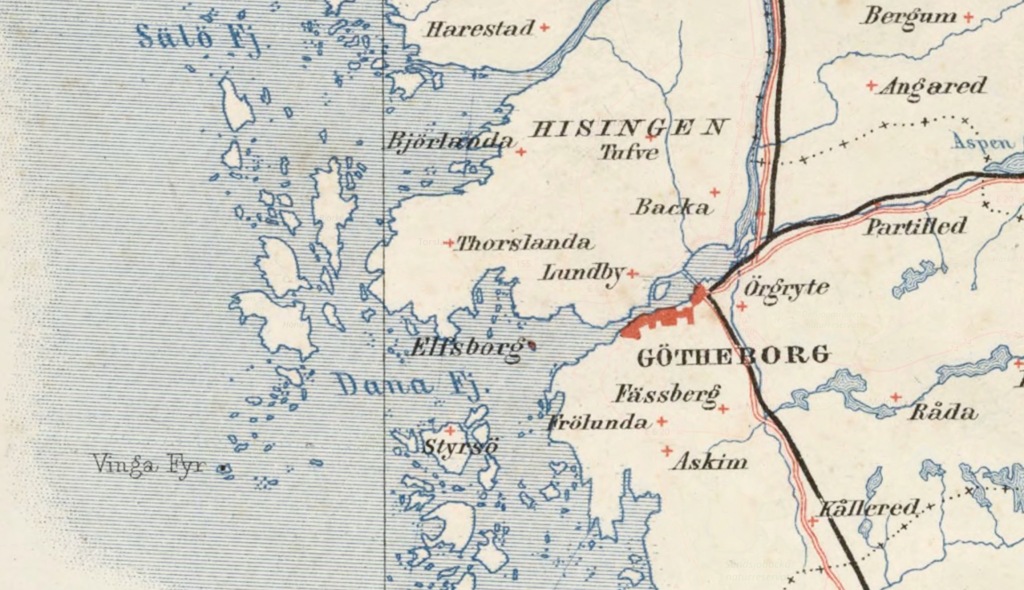
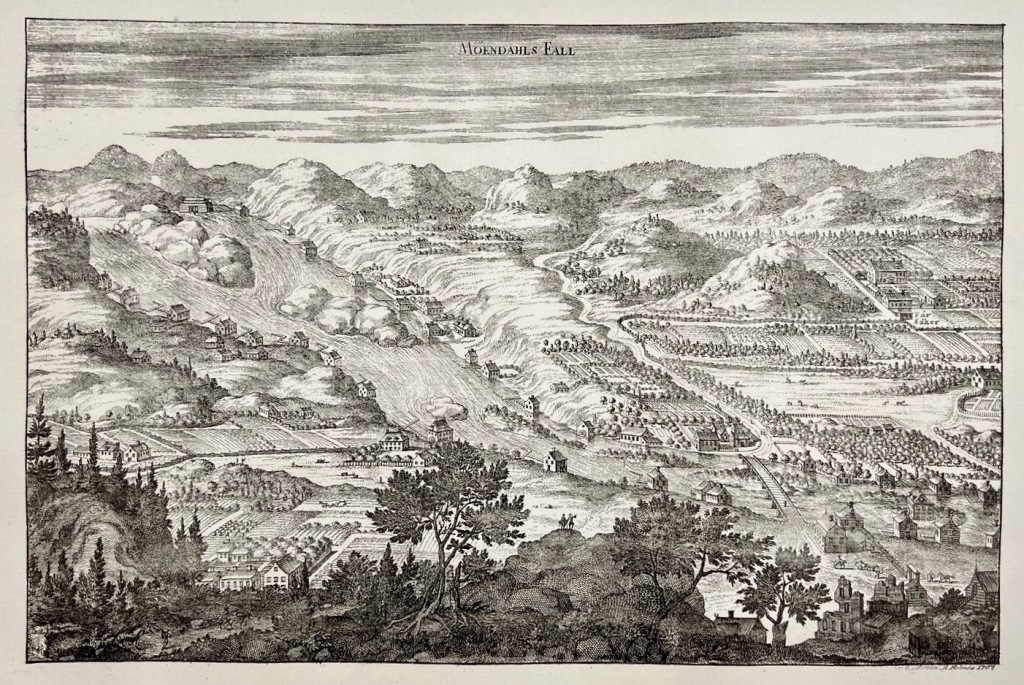
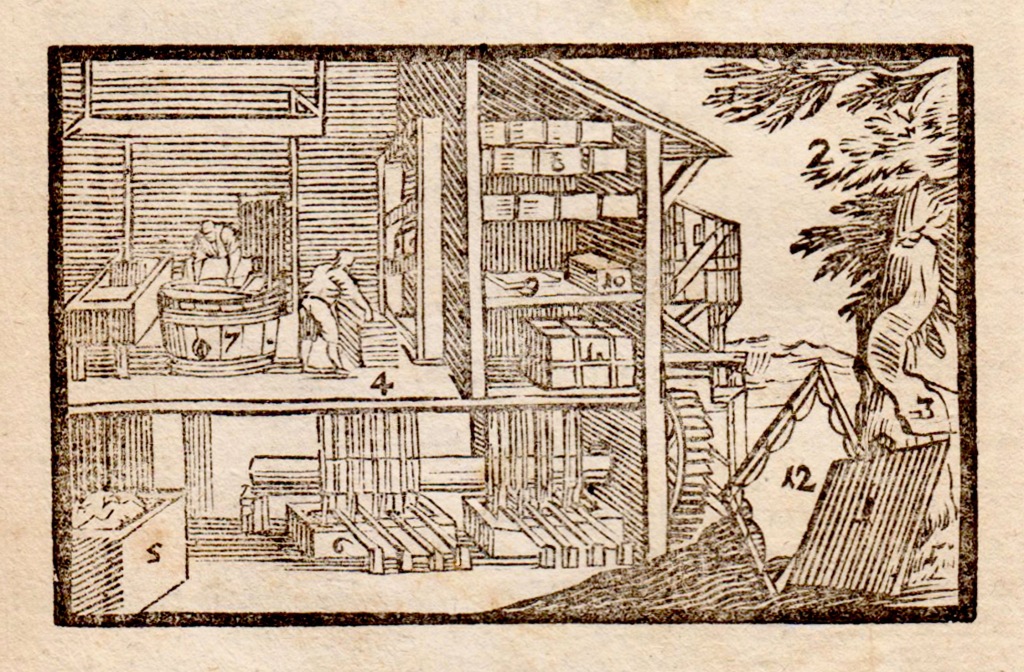

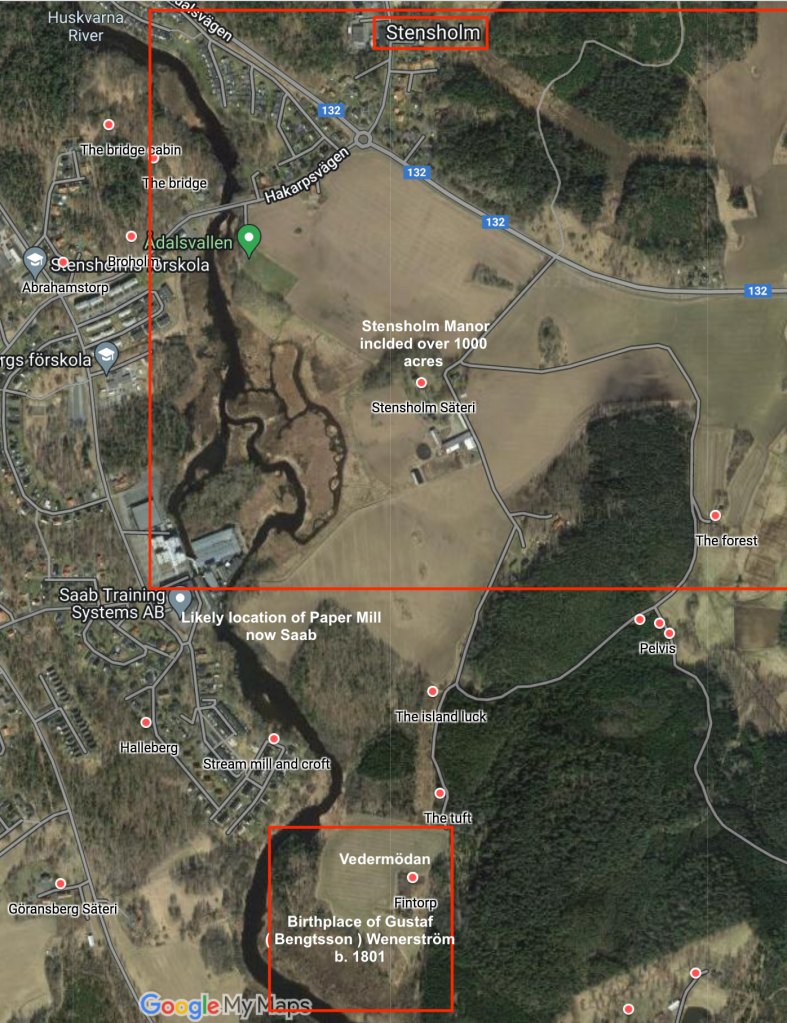
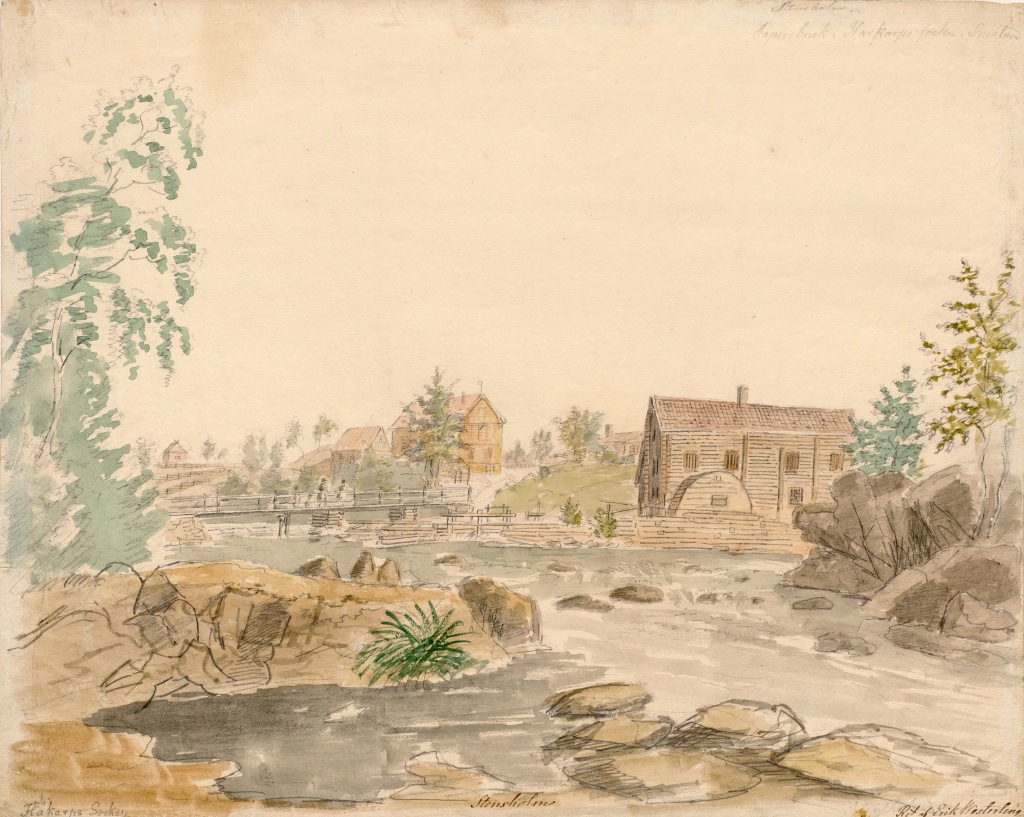

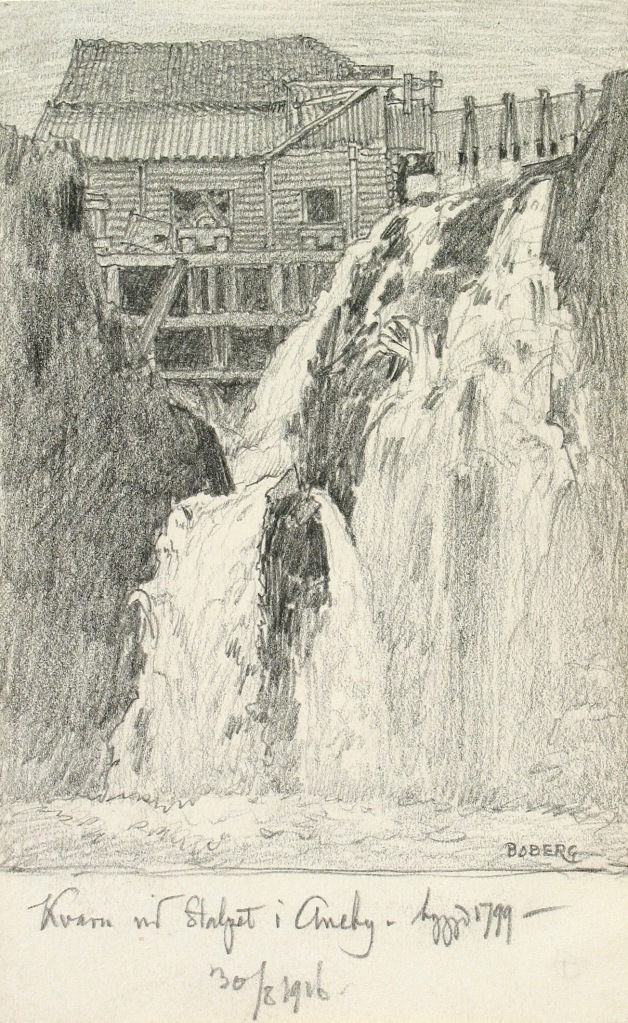
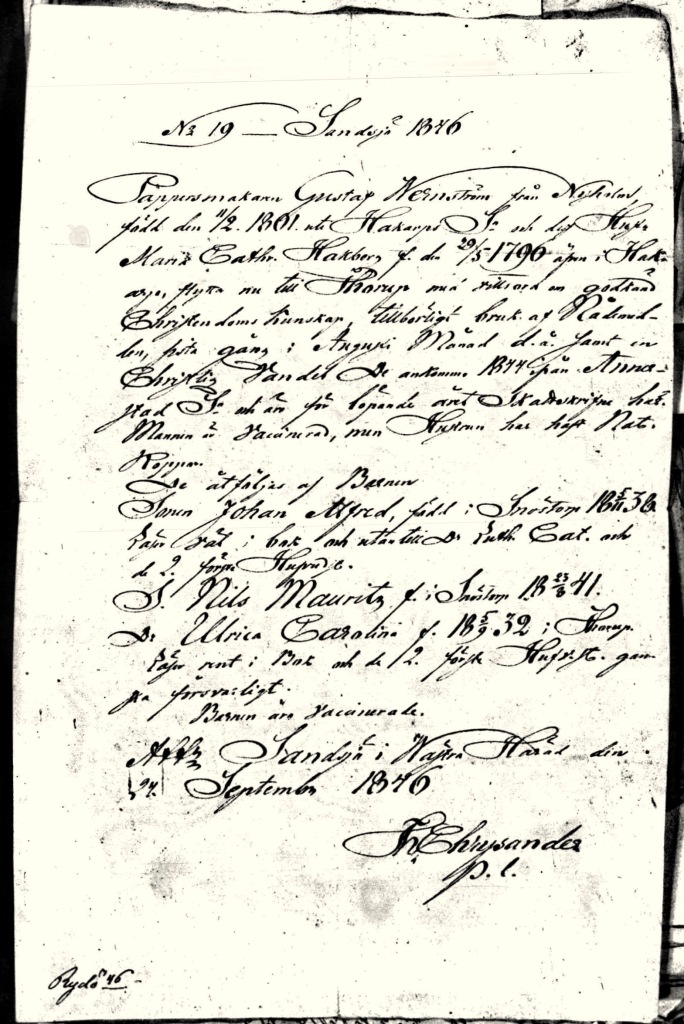
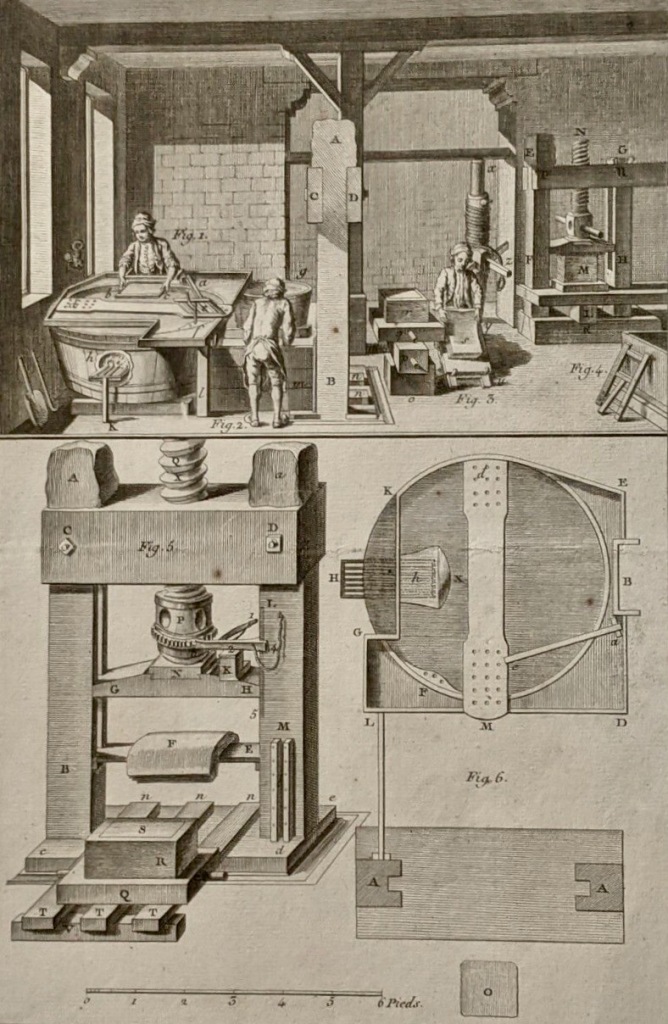

Pingback: We Can’t Write What We Don’t Know: A Journey from the Fjords of Norway to the Shores of New York Mid 19th Century | Wheaton Wood
Pingback: Patterns & Intersections in Genealogy | Wheaton Wood
Pingback: Fleshing out the Story: Context Matters | Wheaton Wood